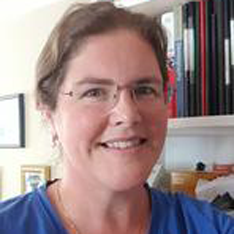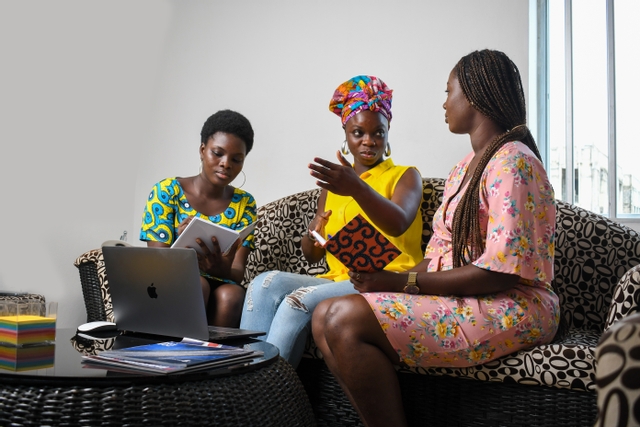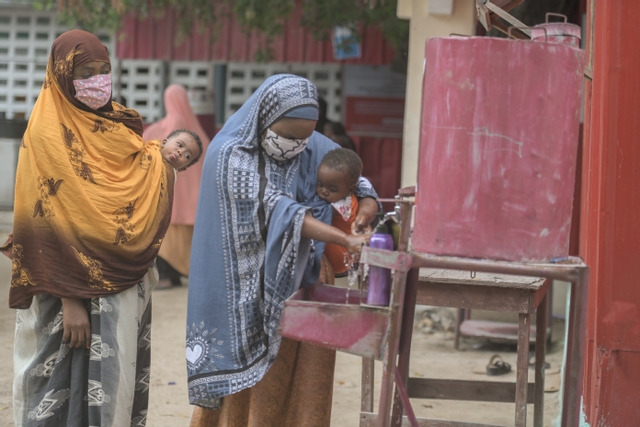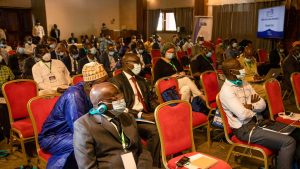
Counting Women’s Work
the road travelled

By Gretchen Donehower
The generational and gender economy
I made my way slowly across the campus of the East-West Center in Honolulu, Hawaii, to the 10th World Workshop of the National Transfer Accounts (NTA) project. It was June 2010 and the last conference I would attend before going on maternity leave for my second child. I was feeling huge and Hawaii was hot.
« The NTA project is about understanding the generational economy – how we produce, consume, share and save resources by age – and after working on this project for over a decade in countries around the world, we’d learned a lot. We’d created data tools that showed us how governments and families support us when we’re too young or too old to work, how these systems differ across time and space, and how all this impacts on economic growth and sustainability. »
This was particularly relevant to me at the time, as my young family was growing and facing the challenge of how to pay for everything. We were also faced with the challenge of finding the time to do it all – caring for our children, doing our paid work, preparing for our own aging and retirement one day, and the possibility of also having to care for aging parents.
The overlap between my life and my work increased because I had to chair the NTA research network’s efforts to extend our work to include gender. The gender dimension of economies differs in time and space, as does the generational economy, and there are institutions that shape it. Cultural norms, legal institutions and biological differences influence individuals and lead men and women, girls and boys, to participate differently in our economies. Having children has made me understand many of these differences in a very concrete way.
At the time, the NTA research network included teams of researchers in over 40 countries (today there are teams in almost 100 countries), from all regions of the world. Network members specializing in economics, demography and other fields set out to integrate a gender perspective into the existing study of generational economics.

Unpaid care work is key to understanding the gender economy
It was clear to us from the outset that understanding the gendered economy would pose a major challenge to the way we had studied generational economics. The only part of “the economy” we were measuring in the NTA was that defined by existing measures such as gross domestic product and other market-based measures that form the backbone of macroeconomics.
Our picture of the generational economy begins by disaggregating these and other measures by age. Adding gender to the table using only these measures showed us one aspect of the gendered economy: on average, men produced more in the labor market than women at almost all ages and in almost all countries. What’s more, in the years when their incomes were highest, men produced much more than they consumed, using the surplus to save and make transfers through families and governments to other age groups and to women. In most countries, on the other hand, women, even at the peak of their earnings, generated virtually no surplus. Although the size of this gap varied from country to country, it remained true in rich and poor countries, in countries with more or less egalitarian gender cultures, and in all regions of the world.
What’s missing from this image? Unpaid care work. Women specialize in unpaid work such as caring for children and the elderly, maintaining and managing household life. Researchers had long recognized the need to make this sector of the economy visible, by developing “satellite accounts of domestic production” to measure its value. This method uses time-use surveys to estimate the time people spend on unpaid care work, both direct care of people and indirect care through housework and household management, and then assigns a monetary value to this work as the amount of money someone would earn for it in return for payment.

Counting Women's Work mapping the gender economy
Thanks to an initial grant from the William and Flora Hewlett Foundation in 2014, the Counting Women’s Work (CWW) project began to integrate the gender perspective and unpaid care work into the National Transfer Accounts project. Led by research groups at UC Berkeley and the University of Cape Town, national research teams worked to see how we could create comparative estimates across countries of how production, consumption and transfers of market goods and services and unpaid care work time differed by age and gender. This work provided important insights into unpaid care work and the gendered economy:
- Unpaid care work represents a substantial proportion of all work effort, ranging from 30% to 60% of total time worked in a diverse group of countries.
- Most unpaid care work is done by women and girls, while men and boys specialize in market work.
- As young as time-use surveys can measure, girls perform more unpaid care tasks than boys.
- Unpaid care work creates future human capital, particularly in the first years of life. For example, if we value unpaid care time at the salary of an educator, 90% of the cost of an infant’s first year of life is unpaid care work.
- Older people, and older women in particular, perform a large proportion of unpaid care work. In most countries, older women spend more time on unpaid care work than they consume until they are in their late sixties or older.

Making women's work count in politics
One of CWW’s important impacts to date has been to recognize unpaid care work as work, and to highlight the value of women’s contributions in this sector. Going forward, we’re focusing on specific ways in which understanding the gendered economy can help shape better policies. As policy impacts depend on the specific needs and context of each country involved in the project, what is the role of the project team still based at UC Berkeley? Our goal is to maintain Counting Women’s Work as a source of high-quality data on the gendered economy, accessible to people around the world who are striving to understand gender in their societies and the policies that shape them. This broad objective is supported by a number of activities:
- Provide technical assistance to research teams implementing the methods developed by Counting Women’s Work.
- Guarantee the quality of estmations, particularly in terms of cross-country comparability.
- Maintain the project website at www.countingwomenswork.org with its database of comparative estimates.
- Develop and implement methods to make CWW more relevant to decision-makers, such as estimates for targeted sub-groups or particular types of unpaid care work, or specific policy issues.
- Monitor information opportunities via social media, specially designed apps and in-person or online conferences, to raise awareness of the project and promote project participants through global and regional networks as gender economy experts.
Essentially, I work to develop the Counting Women’s Work “brand” through our data and through our people. The stronger this brand becomes, the more it can act to create gender-sensitive policies, monitoring and societies around the world. While the young people I care for at home are no longer babies, questions of care, paid and unpaid, given and received, are still central to my work and my life.

